
© Tristram Kenton / Royal Ballet School. (Click image for larger version)
Royal Ballet School
Summer Performance: Sleeping Beauty – Aurora’s Wedding excerpts, Toot, Sea Interludes, Snegurochka (The Snow Maiden), Pulcinella Suite, Self and Soul, BACH – Forms of silence and emptiness
★★★✰✰
London, Royal Opera House
8 July 2018
www.royalballetschool.org.uk
www.roh.org.uk
This year’s summer performance by the Royal Ballet School (RBS) on the Opera House stage was a matinee in two halves: fine before the interval, with dire, dreary choreography in the second half. Thank goodness for the exhilarating Grand Défilé by all the school’s students at the close.
Though the matinee is not intended as a gala showcase for the most talented youngsters, it should surely provide an entertaining programme for an audience not simply made up of proud parents and teachers. The students need to experience different styles of dance, since not all will be going to elite classical ballet companies – but does the school need to inflict choreography the Royal Ballet should do its best to avoid?

© Tristram Kenton / Royal Ballet School. (Click image for larger version)
The matinee started on a high in Anthony Dowell’s production of Aurora’s Wedding, taken (like English National Ballet School’s version this year) from The Sleeping Beauty. The RBS has the advantage of the House orchestra and an opulent setting, in Oliver Messels’ 1946 backdrop for Act III and Peter Farmer’s costumes (mostly) from the company’s current production. I missed, though, the presence of the King and Queen presiding over the ceremony. The divertissements lacked a focus until the Lilac Fairy completed the tableaux in the Prologue section and the Act III conclusion.
Lore Zonderman was a commanding Lilac, with well-controlled grands fouettés and clear double pirouettes. All the Fairy variations from the Prologue were well done, though the soloists, Upper School 3rd years, tended to confine themselves neatly to a small area of centre stage. A notable exception was Katharina Nikelski, electrically charged in the ‘Finger’ variation, here called the Fairy of the Golden Vine.

© Tristram Kenton / Royal Ballet School. (Click image for larger version)
The Prologue Fairies, their cavaliers and Lilac’s attendants were well-drilled by Dowell in their ensembles, the girls’ legs at exactly the same position in attitudes derrière et devant, a Royal Ballet speciality. When it came to the Act III divertissements, the White Cat and Puss in Boots (Madison Bailey and Sacha Genet) were charmingly capricious, while the Wolf and Little Red Riding Hood were indeed little: Joseph Birtles Clarke and Katie Robertson, White Lodge Year 8, were half the height of the Upper School seniors. (He didn’t abduct her – they ran off together.)
Amelia Townsend as Princess Florine and Taisuke Nakao as the Bluebird were excellently flighty, he with springy beats and plenty of stamina. After the Grand Pas de Deux came The Three Ivans, bounding Russian-style to the coda music, as they used to do in early productions of The Sleeping Princess (as the ballet was once known to distinguish it from The Sleeping Beauty pantomime.) The Ivans were Damon Axtens and Matthew Bates, 2nd years, and Ryota Hasegawa, 3rd year.

© Tristram Kenton / Royal Ballet School. (Click image for larger version)
As Aurora in the wedding pas de deux, Yu Hang was grand and gracious, never mannered. Harrison Lee made the most of his only chance to show what he can do as a classical dancer in his solo variation, finishing impeccably. Both graduates have been taken into the Aud Jebsen Young Dancers Programme, as have four others: Katharina Nikelski, Amelia Townsend, Taisuke Nakao and Harris Bell. It’s evidently the apprentice scheme for future members of the company (with luck).
After a short pause came some larky extracts from Didy Veldman’s Toot, made in 2005, to music by Shostakovich and the Balanescu Quartet. The longer work is a sardonic comment on conformity and anarchy, played out by a group of white-faced clowns. Youngsters from White Lodge Years 10 and 11 obeyed and defied commands shouted through a megaphone by Harris Bell. William Boswell (Upper School 2nd Year) cheekily pursued a shy girl (Ginevra Zambon) hidden behind a bouquet of balloons, until she vanished into seemingly thin air. Entertaining as light relief, the extracts provided little information about the performers or the longer work.
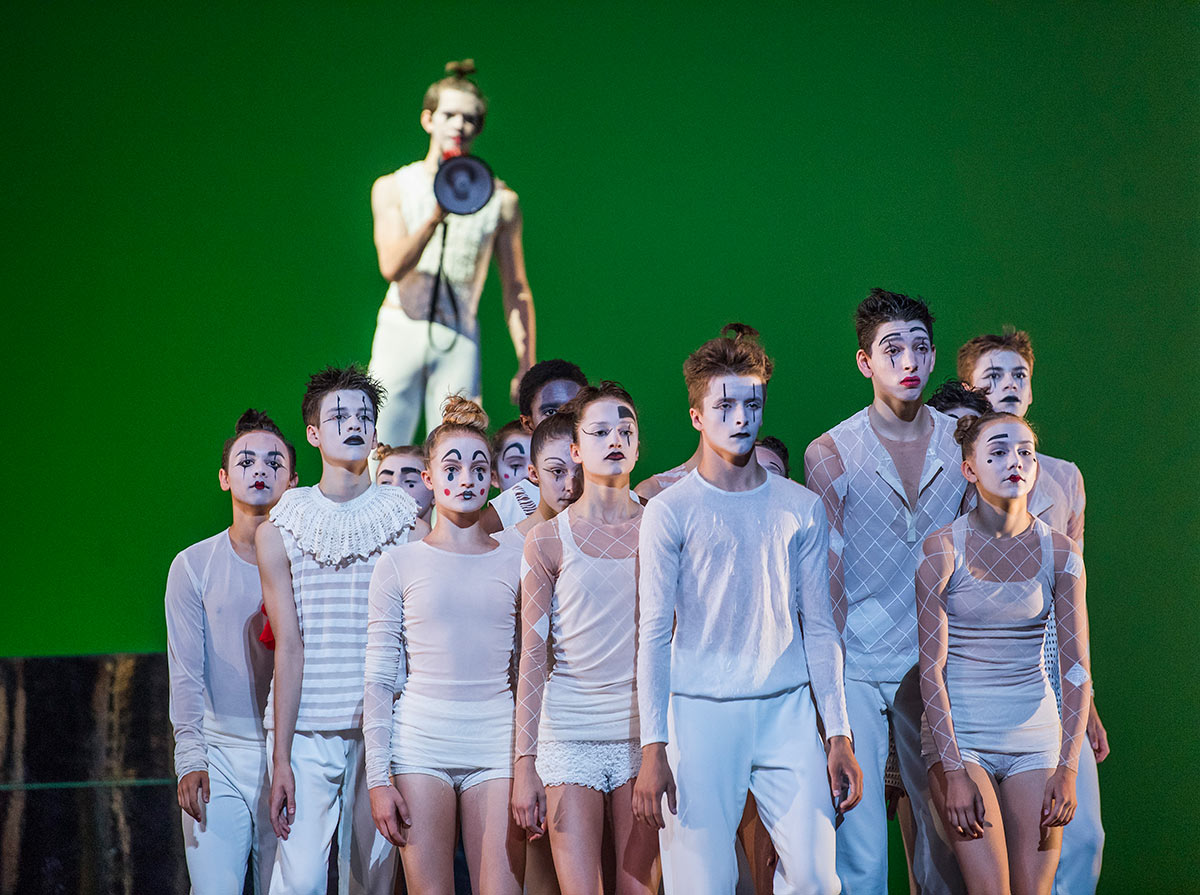
© Tristram Kenton / Royal Ballet School. (Click image for larger version)
Toot was swiftly followed by Sea Interludes, choreographed by Andrew McNicol to Benjamin Britten’s interludes from his opera Peter Grimes. Made for the Upper School 1st years, it’s a considerable achievement, by far the best work by a contemporary dance-maker in the programme. McNicol, 25, who started his choreographic career while he was still in the RBS, is now much in demand, for obvious reasons. He can handle a large number of dancers to complex music not composed for dancing; he can invent unusual partnering; he uses stillness as well as turbulent effects; he never resorts to clichés.
His sea creatures ebbed and flowed, the girls in dark blue chiffon shifts, the boys in white trousers, cresting on waves of movement like spindrift. Responding to the music, the ballet-based choreography varied from serene to ominous, shaping bodies into ever-changing formations. A pas de deux couple, Marianna Tsembenhoi and James Large, found themselves stranded in isolation, only to be caught up in the next surge of activity. McNicol has created a ballet worthy of any company’s repertoire.

© Tristram Kenton / Royal Ballet School. (Click image for larger version)
After the interval came two pieces for juniors from White Lodge, made for them by school staff. While it’s delightful to see youngsters on the main stage of the Opera House, both works outstayed their welcome. Snegurochka (The Snow Maiden), by Tania Fairbairn, was a folk-ballet telling some kind of story to Tchaikovsky’s incidental music. Pulcinella Suite, by Mark Annear, had Years 10 and 11 dancing folk-inflected steps to Stravinsky’s ballet music of the same name. The choreography was simple, effective but very repetitive. A show-off solo for Maxwell Dawe, swift and confident, lifted the spirits.
The next two contributions for Upper School students exposed them to the kind of choreography that goes down well with audiences who dislike classical ballet. Robert Binet, a much-favoured young choreographer with the National Ballet of Canada, created a duet, Self and Soul, for the Erik Bruhn Competition in 2016 and passed it on to the Canadian company. Based on diary reflections by an Israeli writer, the duet apparently tries to capture conflicting ideas about life and love, body and soul. Rebecca Blenkinsop and Harris Bell slumped and suffered, exulted and agonised, hurling themselves to the floor. It was one of those relationships that cannot be, for reasons we cannot know, set to incomprehensible sounds.

© Tristram Kenton / Royal Ballet School. (Click image for larger version)
The curtains closed and a figure in 18th century dress came forward to open them again on a semi-circle of black-clad students. Simon Regourd was meant to be Johann Sebastian Bach, conducting musicians playing his works in extracts from Nacho Duato’s BACH, forms of silence and emptiness (1999). One of Duato’s best-known works, originally in two acts, it’s an episodic account of Bach’s life. The Mikhailovsky Ballet brought it to the London Coliseum in 2013.
Seated on folding chairs, the students formed an orchestra of musicians or instruments following Bach’s baton. (The music was recorded.) Then they proceeded to dance ‘bizarre baroque’ to harpsichord studies, involving the inevitable flared skirts, flexed feet and curving torsos of dance-making influenced by Jiri Kylian’s choreography. Good practice for students joining European companies but laden with contemporary-ballet clichés.
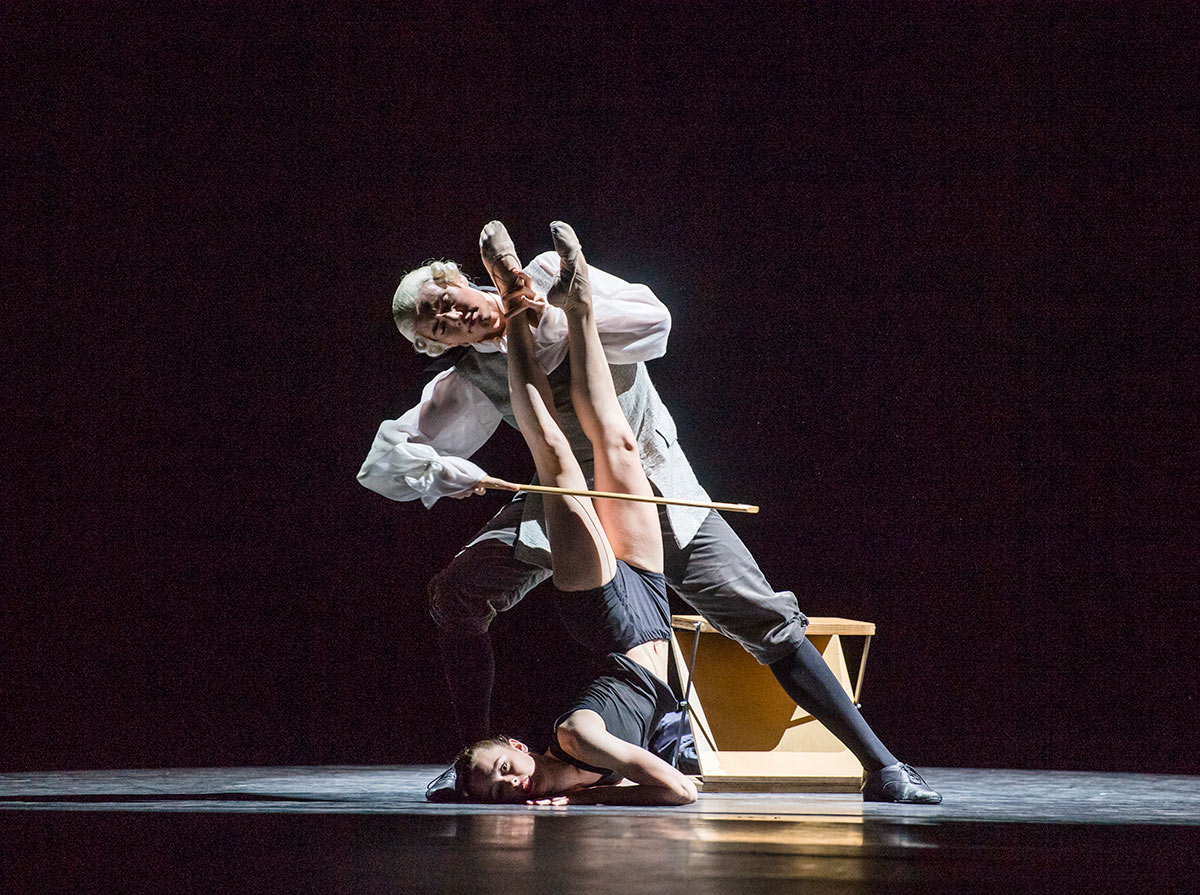
© Tristram Kenton / Royal Ballet School. (Click image for larger version)
A duet from the work is often given in galas, with Bach in a white wig playing a supple woman as if she were a cello. Madison Bailey, 2nd Year student, took the role, writhing around Regoud’s seated body as he sawed at her. She is intended to be his muse, the soul of music. All very inspiring, unless you see the duet as suggestively abusive.

© Tristram Kenton / Royal Ballet School. (Click image for larger version)
The Grand Défilé was a joy, as ever, thanks to the late Gailene Stock, who devised it for the School. The stage fills with colour-coded students of all ages and sizes, beaming with pleasure as the audience beams back. This year’s graduates (as well as the six joining the Aud Jensen apprentice programme) go to Birmingham Royal Ballet, English National Ballet, Scottish Ballet and companies elsewhere in Europe, with just one, Eli Gruska, joining American Ballet Theatre’s junior company.












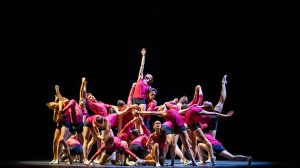


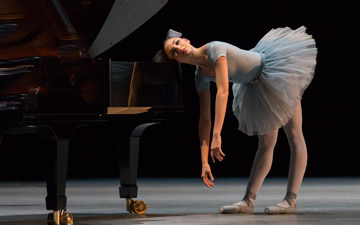
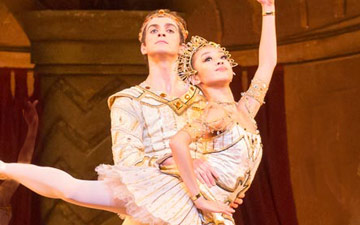
You must be logged in to post a comment.